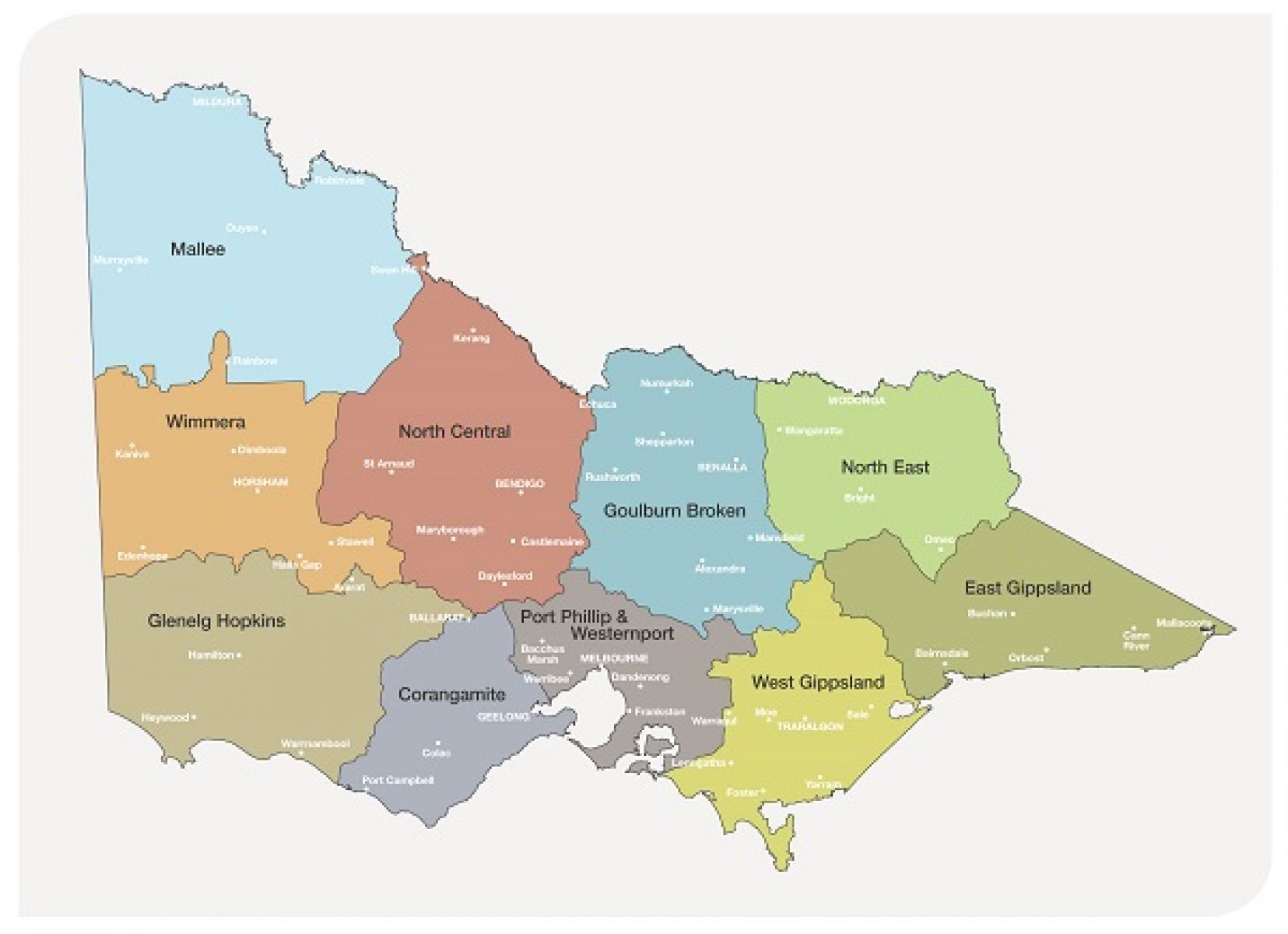On this page:
Victorian water catchment regions
In Victoria, there are 10 catchment management regions.
Each region has a catchment management authority to coordinate integrated management of land, water and biodiversity. In the Port Phillip and Westernport region, Melbourne Water has the waterway and catchment management responsibilities.
Catchment management authorities and Melbourne Water have specific responsibilities for waterway management under the Water Act 1989. Collectively, they are known as the waterway managers.

Role of waterway managers
Waterway managers have the lead role in developing and delivering regional programs for waterway management. The range of functions they undertake includes:
- Developing a regional waterway strategy and associated action plans.
- Developing and implementing work programs.
- Authorising works on waterways, acting as a referral body for planning applications, licences to take and use water and construct dams for water use and other waterway health issues.
- Identifying regional priorities for environmental water management and facilitating delivery of environmental water.
- Providing input to water allocation processes.
- Developing and coordinating regional floodplain management plans.
- Managing regional drainage in specified areas.
- Undertaking community participation and awareness programs.
Regional waterway strategies
The regional waterway strategies, developed in 2014, are a single planning document for each region's river, estuary and wetland management. They drive the implementation of the management approach outlined in the Victorian Waterway Management Strategy.
New regional waterway strategies are currently being developed by waterway managers, in partnership with Traditional Owners, local communities, private landholders, relevant statewide and regional agencies and boards and other key stakeholders. The requirements and expectations for developing regional waterway strategies are outlined in the Ministerial Guidelines for regional waterway strategies (2024), issued by the Minister for Water.
Melbourne Water’s current strategy, the Healthy Waterways Strategy, was released in 2018 and is due to be renewed in 2028.
For coastal regions, the strategies include the management of estuary health, highlighting the importance of estuaries as the link between catchments, coasts and the marine environment.
Page last updated: 26/02/25
